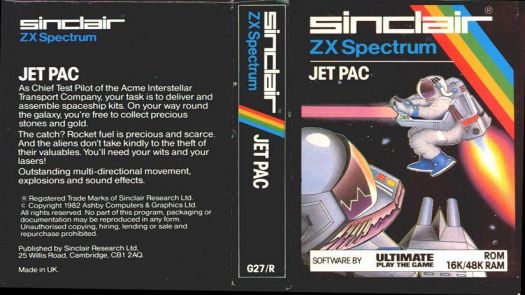


Type 20 and then press SHIFT + F to insert FOR, then type c=1 and press CTRL + F to insert TO. This is used to create a variable, total, and store the integer value of zero. Type 10 to start the line, then press SHIFT + L to insert LET.
#Sinclair zx spectrum roms how to#
It demonstrates how to create a for loop, and create variables in BASIC.ġ. These numbers are added together to produce a sum at the end. The code will loop round five times, asking for a number each time. The BASIC code for this project is a little more complicated than before. So to write the simple Hello World script. Firstly it shares the same multiple function per key keyboard layout that all Sinclair machines have. So let's fire up a little BASIC code and learn a few of its quirks. When Fuse starts we are presented with the 48K BASIC interpreter. $ fuse Getting to Grips With BASIC and Fuse Once installed, launch the application by typing this command.
#Sinclair zx spectrum roms install#
Open a terminal and type the following to install the Fuse app and Spectrum machine ROMs. Fuse is considered the de facto emulator for Sinclair machines. We installed Fuse (Free Unix Spectrum Emulator) on Ubuntu 18.04. Can emulation give us the same nostalgic glow, can we create BASIC code projects and what is the best way to emulate a ZX Spectrum? Below, we show you two methods: one which turns your Raspberry Pi into a Spectrum and another which gives you a simple emulator that should work in Ubuntu and other flavors of Linux. It is here where we start our journey into emulating the ZX Spectrum machines, chiefly the 48K and 128K aka “The Toastrack”. The first ZX spectrum, released in 1982 introduced the rubber keys and diminutive size of the iconic classic computer. The ZX81 was a success and from that initial success more “ZX” machines were released with better graphics, and infamous rubber keys. An agreement with Timex saw the ZX81 hit the US market as the Timex Sinclair 1000, and an unauthorised clone, the TK85 was released in Brazil via Microdigital Eletronica. The ZX81 released in 1981 and retailing for half the price of the ZX80 addressed this and other issues while providing a solid base for learners eager to code. The ZX80 proved a cost effective means to get your first computer and learn how to code but it did have a few quirks, famously causing the screen to flicker as each key was pressed. But, in 1980, Sinclair's company released the ZX80 computer for £99.95 and it was marketed as the “first personal computer for under £100”.


 0 kommentar(er)
0 kommentar(er)
